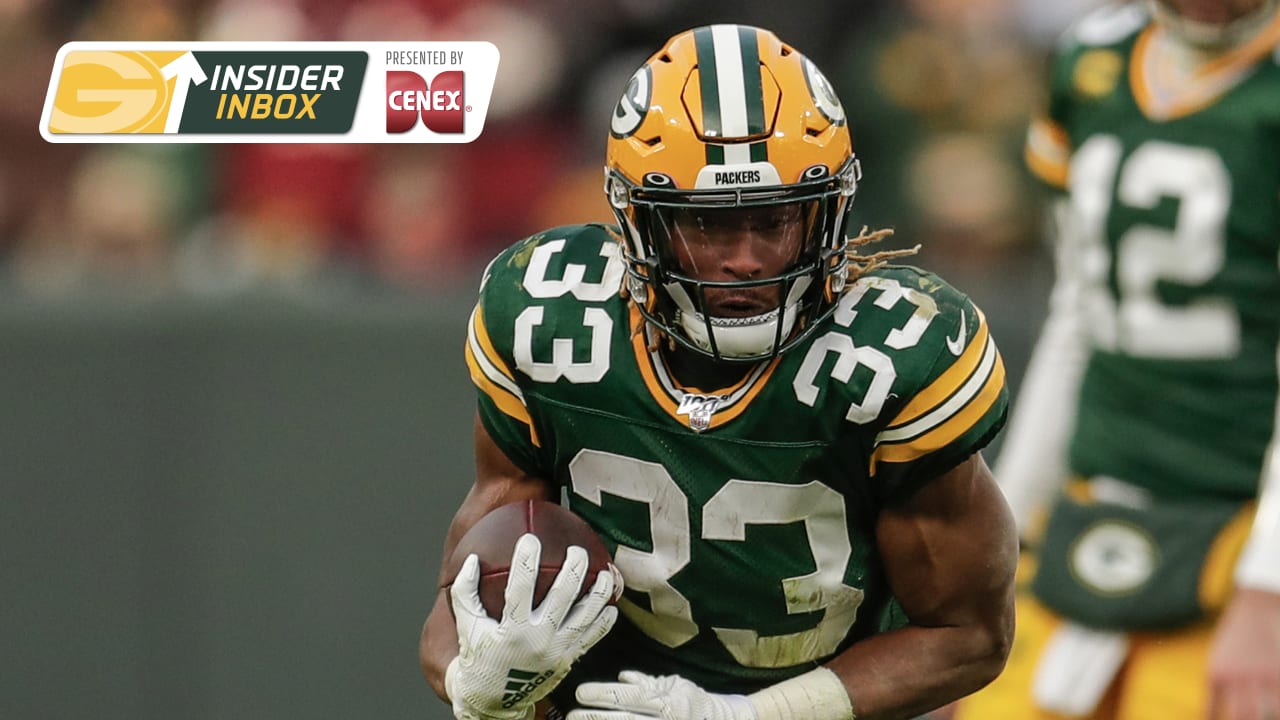Cheesehead
Well-known member
- Mar 19, 2019
- 2,854
- 0

Hannes from Milwaukee, WI
Based on talent and injury history I would classify the free-agent acquisitions made last year were low-risk players with high-risk contracts. Contrary, this year's crop looks riskier in terms of production but with little contractual obligation. Am I reading too much into this or does this prove Mr. Gutekunst takes whatever the cap dictates? Offseasons won't get boring with this guy.
No, they won't. I've said all along these moves make plenty of sense given the Packers' circumstances.
Jerry from Las Vegas, NV
Good morning, II. I'm sure you've answered this question before but, here goes: What exactly is a guaranteed contract? What money is guaranteed and in what circumstances is it guaranteed? Injury? Being cut? Being traded? Being waived? And is it a special clause in the contract or are their some contracts that the money is guaranteed implicitly?
NFL contracts are not fully guaranteed, like they are in the NBA and MLB. Kirk Cousins' original three-year deal with the Vikings was fully guaranteed, and that was new. In the simplest terms, guaranteed money is the signing bonus and any salary or other bonuses written into the contract as guaranteed to be paid, whether or not the player gets hurt or cut. A traded player's contract goes with him, so any stipulations are absorbed by the new club unless they renegotiate. To give an oversimplified example, say a player signs a five-year contract worth $50 million that has a $10 million signing bonus and pays him $8 million in salary per year. The first year of salary is almost certainly guaranteed (you're not going to give a guy $10 million to sign and then not have him play for you at all), so that $50 million contract has $18 million in guaranteed money, with $10 million per year in cap charges ($8 million salary plus $2 million in prorated signing bonus spread out over the five years). If the club wants to cut the player after one year, it's off the hook for the non-guaranteed $32 million in salary, but it would take an $8 million cap hit at some point on the signing bonus portion that hadn't yet counted. That's what's called dead money. Again, vastly oversimplified, but hope it helps.
Dennis from Parrish, FL
Today we go to a random street in Green Bay, with proper spacing of course! Who runs a better 40, Mike or Wes?
I'll concede Wes, but I think I could keep it close. A mile? Wes by (almost) a mile.
Derek from Norton, KS
The Funchess acquisition is receiving a lot of scrutiny from a certain Packer "Insider" on Twitter. I understand that Funchess never blossomed into the pro that many expected. Would you attribute any of that to QB play? I feel playing with Rodgers could certainly eliminate some of his inconsistency.
Newton was no slouch, so I wouldn't necessarily go there. Funchess' hands haven't been reliable over the course of his career. He's had a lot of drops. Issues like that can build and fester when a player is in one place for an extended period. I suspect Funchess was looking for a reset by signing with Indy last year, but the broken collarbone nixed that. Now he's looking for another reset.
Vinny from Arlington, VA
Mike, as we'd be in the midst of NCAA March Madness right now, I wanted to flash back to last year's tournament. Was the run by Tony Bennett's UVA (Cardiac Cavs) team one of the most improbable and magical (one game won in the last tenth of a second, another tied at the buzzer, another tied in the last 15 seconds of regulation)? Do you think that type of run will ever be replicated by a single team? Never has "team of destiny" and redemption ever seemed so appropriate to what we witnessed.
Coming off the loss as a No. 1 seed to a 16 the previous year, the first time that had ever happened, made the Bennett/UVA journey truly unique (appropriate use of an otherwise overused term). I think just about every NCAA champ survives a buzzer-beater or heart-stopper of some kind on its way to a title. But to me the greatest of those stories remains Jimmy V's 1983 N.C. State Wolfpack. They had their backs up against it multiple times in the ACC Tournament just to get into the Big Dance in the first place, and then they pulled off the impossible. I remember watching a lot of it unfold in real time, but if you haven't seen the "Survive and Advance" 30 for 30 film, it defines March Madness.
Steven from Silver Spring, MD
Your answer to Andrew that SF was unique in their running production was surprising. Baltimore similarly used a run-focused offensive scheme as did the Titans and Bills. Each employed a different method but all were certainly run-first teams. I see the pendulum swinging again as defenses continue selling out to the pass.
Baltimore's QB was highly involved in the running game and Tennessee's ground game was built around one power back. San Francisco's was very different than anyone else in how the offense was built and distributed the ball. That was my point.
John from Provo, UT
Mike, I read an article yesterday that talked about how college coaches are dealing with COVID-19, such as holding coaches meetings over Zoom, sending players workout plans and workout equipment, and then following up on the players' workouts. Are Coach LaFleur and his staff doing something similar? How are they preparing the team for the season?
I'm sure the coaches are meeting and communicating in similar fashion. There's no football-related contact between coaches and players allowed until the start of offseason workouts on April 20. Those workouts are indefinitely postponed and I haven't heard what the NFL will allow in terms of communication.
